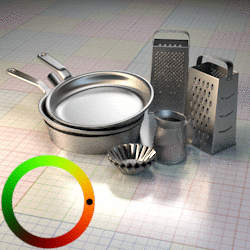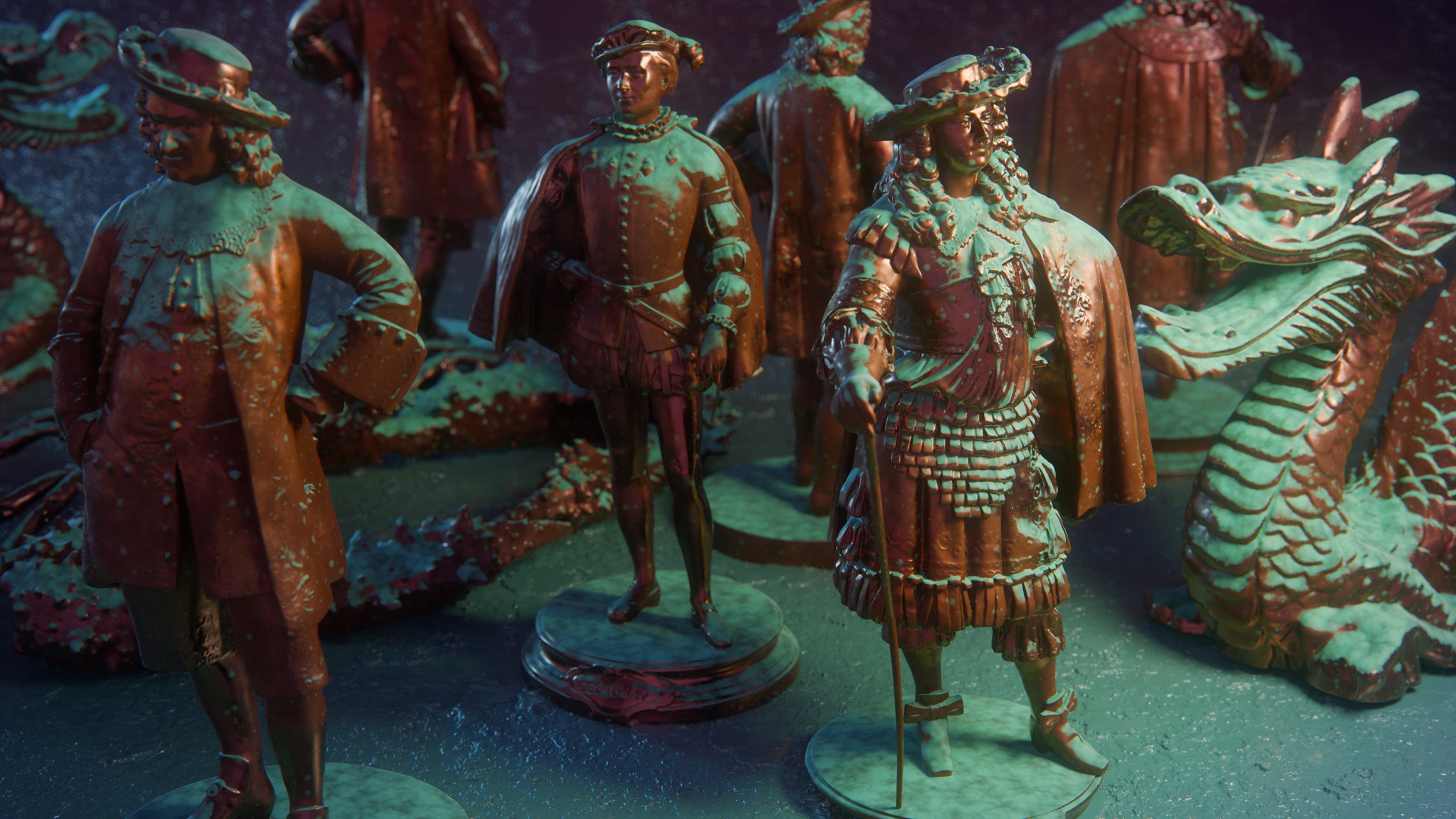

3Delight Metal is a physically plausible material that allows rendering of a whole range of metallic surfaces. This materials differs from other metal material in other renderers in many aspects:
- User friendly parameters such as reflected color and edge tint instead of complex, difficult to understand index of refraction.
- Ability to render coated metals.
- Ability to render tempered metals. This effect is highly realistic and can render real life tempered metals faithfully.
| Excerpt |
|---|
|
|---|
| Specifies wether or not there is a coating on top of the Base layer. Visually, the presence of coating adds the following two characteristics to the look of the layer: - Adds a specular highlight because light can bounce of the smooth surface of the coating.
- Adds a light absorption effect. This is especially visible on gazing angles where light travels a longer distance before reaching the viewer.
| | Sets the colouring of the medium that makes up the coating. Light bouncing from the underlying metal will be tinted by this quantity. Thickness of the coating, described below, will affect how much transmittance color will be visible. 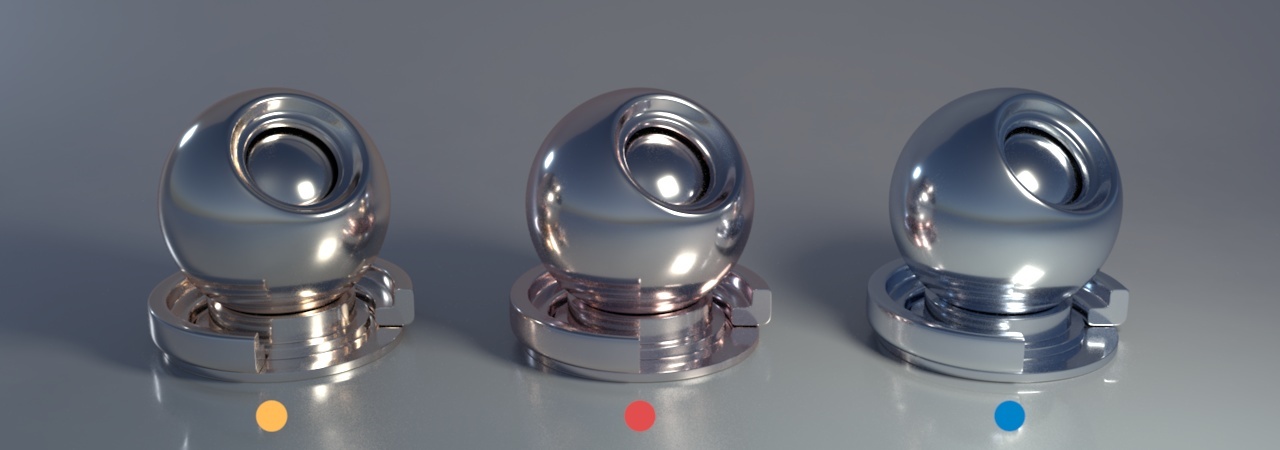
| | Sets the ratio of light that bounces back when coming from a normal incident angle. For realistic coatings, this quantity should be kept low (only conductors have high reflectivity at normal incidence). 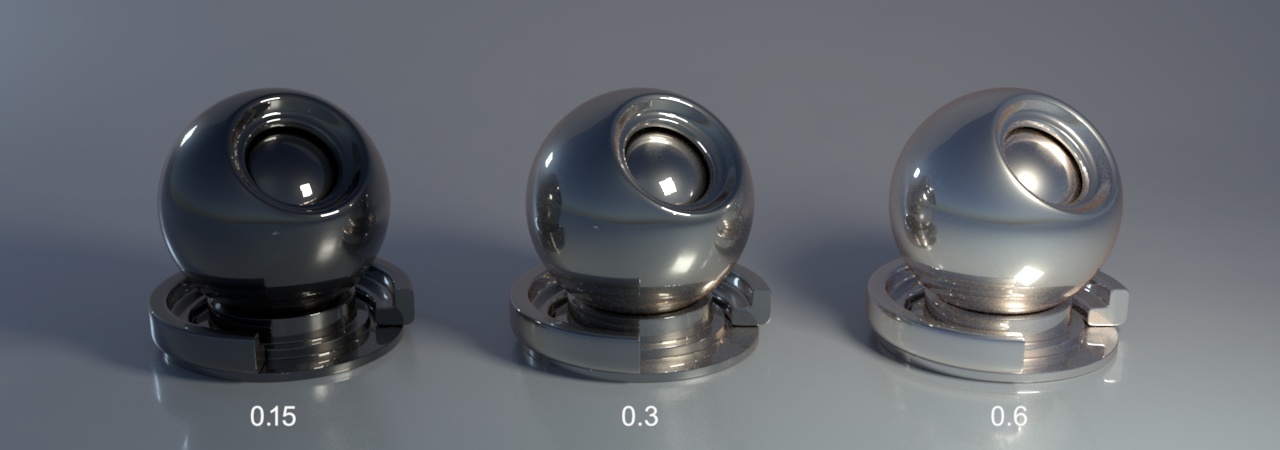
| | Sets the roughness of the coating. 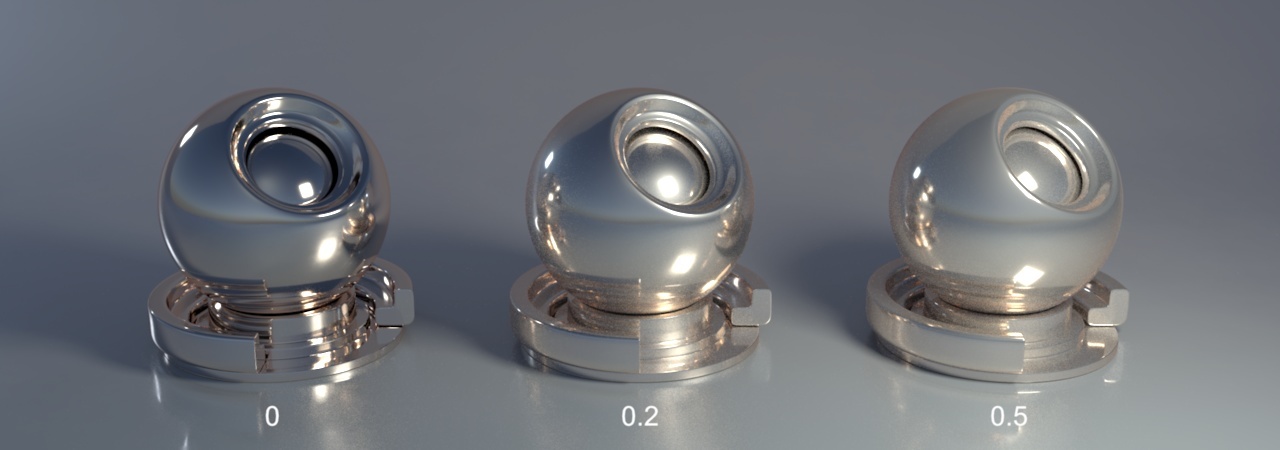
| | Specifies the thickness of the coating. Thicker coatings will show more transmittance color. 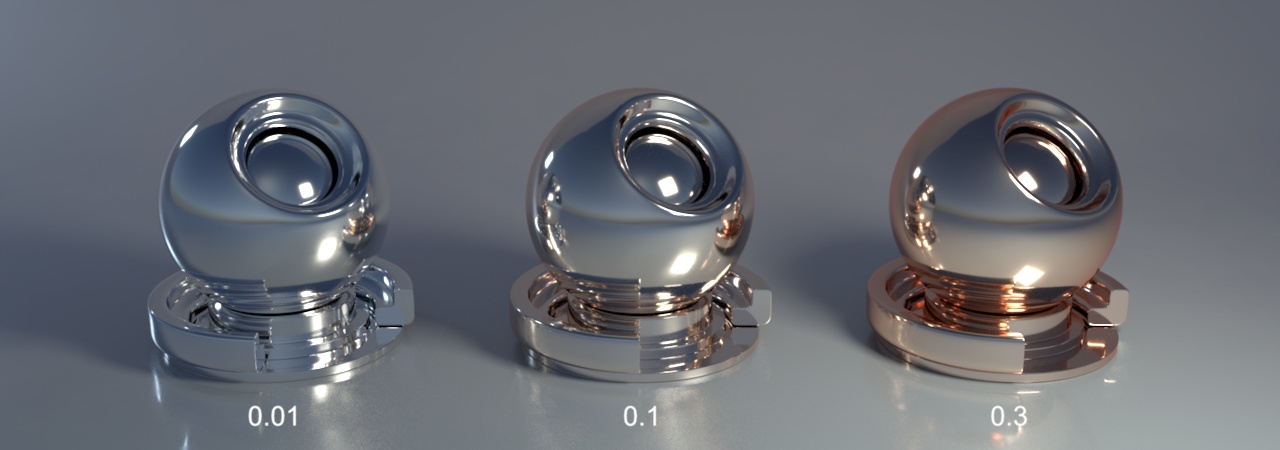
|
|
|---|
| Spcifies the overall colour of the metal as seen from a straight angle. The following image shows a gold object (middle, color = [0.88, 0.60, 0.35] ) alongside two objects with the hue shifted. 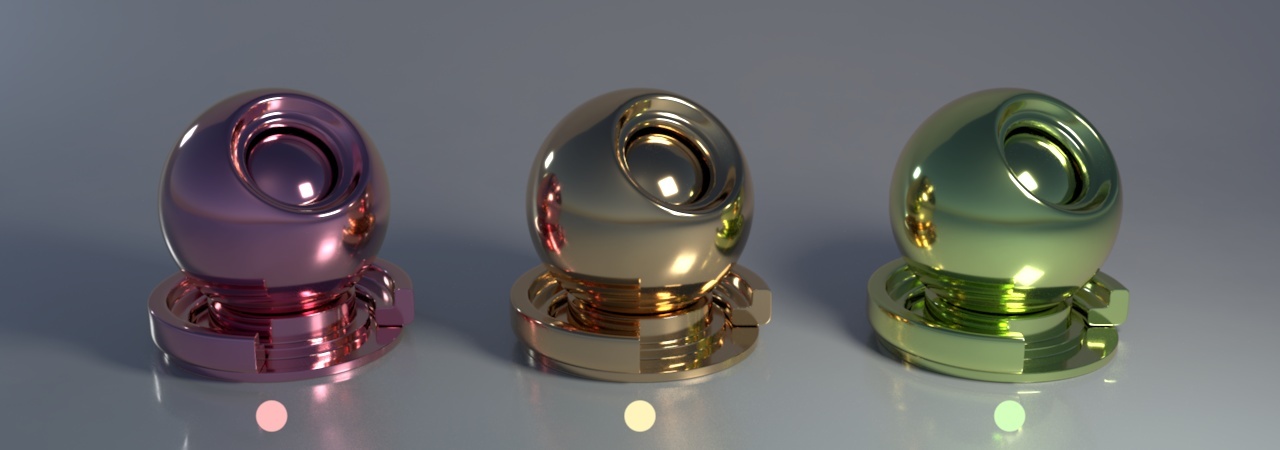
| | Describes how light is tinted at grazing angles. 
| | Sets metal roughness. The following two images show the effect on silver and on carbone. 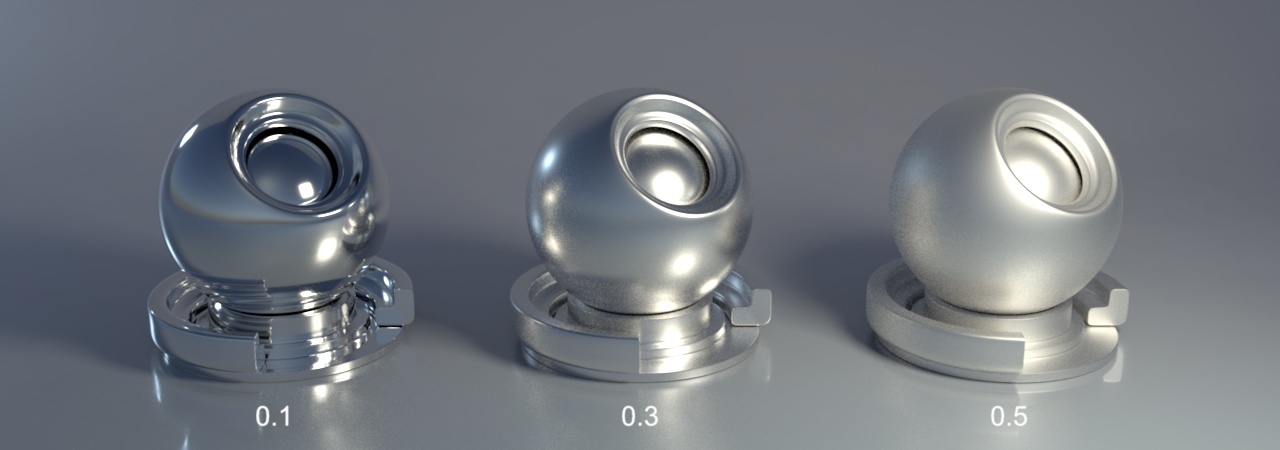

| | Anisotropy is an effect achieved by varying roughness independently in the U and V direction over the surface. A positive parameter value will increase U roughness and a negative value will increase V roughness. From left to right: -0.8, -0.4 and 0.4 .
| | Sets the axis of the anisotropy on the surface. From left to right: [0.5, 1, 0], [1, 1, 0], [1, 0.5, 0] Each channel in the bitmap corresponds to a spatial dimension (X, Y and Z). These spatial dimensions are relative to a varying coordinate system based on the derivatives of position with respect to texture coordinates. Individual components for any direction should be in the range [–1, 1]. But to be encoded into an RGB texture with 8 bits per component, they are mapped into the range [0, 1]. So t XYZ (0, 0, –1) will be remapped to the RGB (0.5, 0.5, 0) values. It's also possible to use an angle texture to convert the direction to a color as show in the table below: 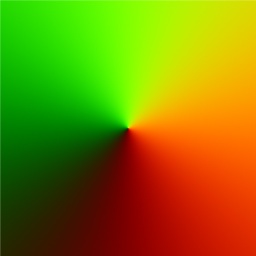
The angle texture used for direction to color conversion | |
|
|
|---|
| The thickness of the oxide layer, in micrometers. 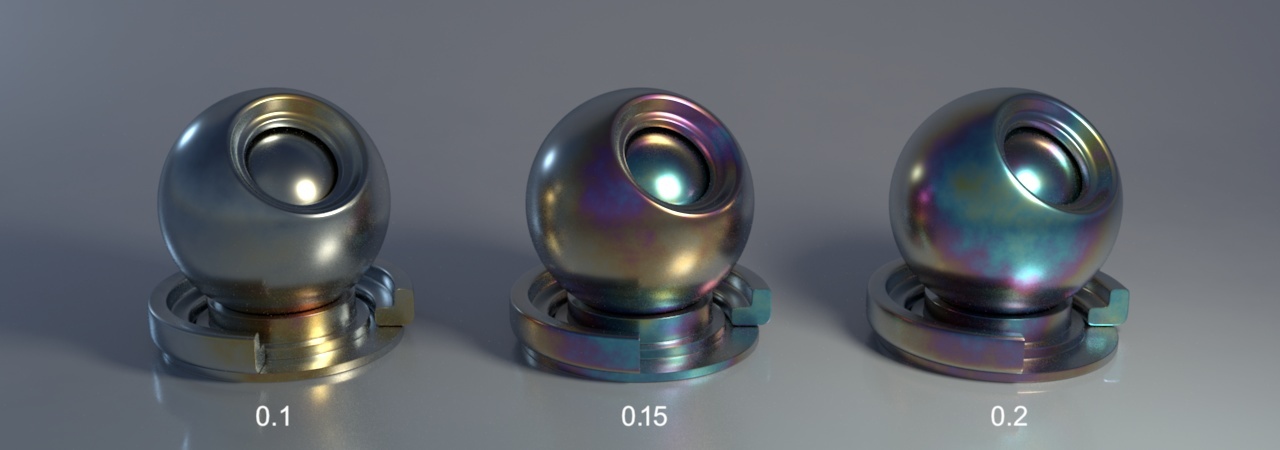
| | Index of refraction of the oxide. Depends on the metal being rendered. Note that the Presets will automatically set this quantity to the correct value. 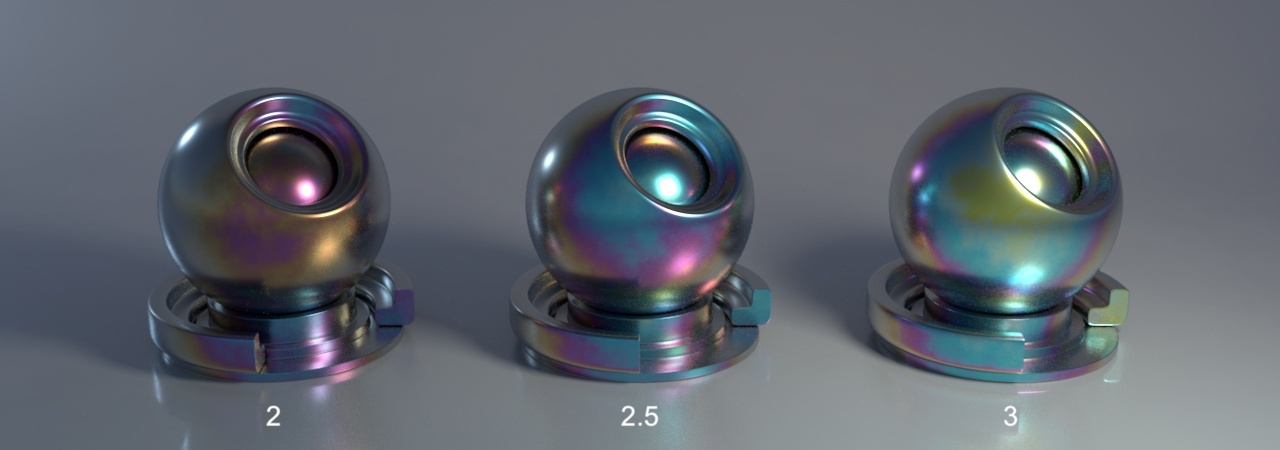
|
| Include Page |
|---|
| Bump / Normal / Displacement Map - EXCERPT |
|---|
| Bump / Normal / Displacement Map - EXCERPT |
|---|
|
Interference colours are produced when metal is heated and a thin film of metal's oxide forms on the surface. They are dependent on the wavelength and angle of the incident light, the thickness of the oxide film and the refractive indices of the oxide material. This effect is also called thin-film interference. 
Figure 1: Explanation of thin-film interference. When the phase difference between the two reflected beams is an even integer multiple of the wavelength of the beam in the film, then the two reflected beams tend to interfere constructively. If the phase difference between the two reflected beams is an odd integer multiple of the wavelength of light in the film, the beams interfere destructively. | 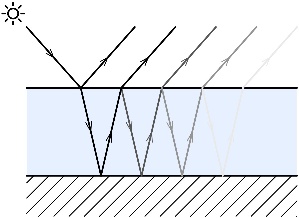
Figure 2: Light path in a thin film of the metal's oxide. |
Coating differs from tempering in that it is used to render a relatively thick medium that has been applied on top of the metal (such as is the case of car paint). Tempering produces a very thin layer of oxyde on the metal surface which can produces interference. From Wikipedia: "In the field of computer graphics, an anisotropic surface changes in appearance as it rotates about its geometric normal, as is the case with velvet". Anisotropy allows to set a different roughness depending on the orientation on surface. On real world surfaces, anisotropy is generated by microstructure characteristics of the surface. For example, brushed metal objects are polished in such way that there are a lot of parallel scratches on the surface. On CDs, the microstructure is produced by "tracks" describing the actual data. The following video shows the effect of anisotropy coupled with tempering. https://player.vimeo.com/video/147743724 |











